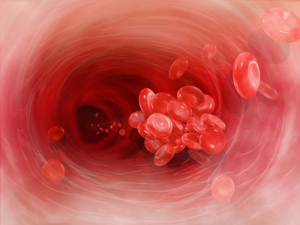Pulmonary embolism (PE) is a life threatening condition that affects over 600,000 people per year in the United States. Through the use of modern diagnostic tools such as multislice spiral CT and advancements in treatment, the mortality rate of PE has been reduced in recent years.

PE involves a blockage of an artery in the lungs from a clot that has traveled through the bloodstream from another part of the body. Usually the clot begins in the deep veins of the legs where it is referred to as deep vein thrombosis or DVT. The risk of PE increases during periods of immobilization such as long plane flights, surgery, pregnancy, and with conditions such as cancer and obesity. Additionally, estrogen based hormonal contraception (birth control) may increase the risk of PE.
Signs and symptoms of PE may include chest pain, shortness of breath, abnormal EKG (such as inverted T-waves), rapid heart rate, and increased respirations. PE may be preceded by leg pain due to DVT. A low grade fever may be present as well as a cough or hemoptysis (coughing up blood). If PE is suspected, a D-dimer blood test should be performed which measures the level of specific clotting related protein fragments in the blood. The D-dimer test can help rule out PE if the blood test comes back within normal limits. However, If the D-dimer blood test comes back elevated for suspected PE, then radiographic imaging is indicated.
When available for imaging, the multi-slice spiral CT is favorable because it is non-invasive and is highly predictive of PE. If the patient has leg pain or other signs of DVT, then a ultrasound (doppler) of the veins in the legs may be performed as there is a high correlation between DVT and PE. But a negative leg doppler does not rule out PE. Other studies to help diagnose PE include include ventilation perfusion scanning and CTPA (CT Pulmonary Angiography-with contrast).
Treatment for PE depends on the severity or size of the blockage. For severe cases that are emergent, thrombolysis may be the preferred treatment- this involves the administration of clot busting medication such as tPA. In specific situations of severe emergent PE, surgery (embolectomy) may be an option to remove the clot. In most cases of PE, anticoagulants such as heparin and warfarin are started early as possible and used to treat the condition. Heparin or LMWH (low molecular weight heparin) are typically given initially followed by warfarin. When indicated, an IVC filter may be placed in the patient to help prevent further clots from forming in the arteries of the lungs.
